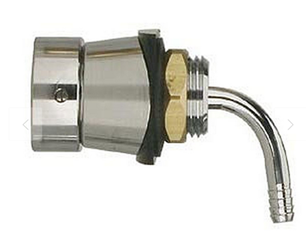So I just put the 4mm in my tower last night (standard Intertap elbow barbs). I know the description of the 4mm tubing says it won't fit on a 1/4" barb, but it will. That said, it was a LOT of work.
Here's how I did it and the best tool I found:
- Use hot water, but not boiling - boiling water really over-softened the tubing and it got mangled in the process of putting it on. It worked a lot better once the water cooled (maybe 160 degrees F).
- Dip about an inch of the tube in the water and the barb as well (the hot barb will go in better than a cold one, which will instantly cool the tubing).
- Pull the tubing out of the water and immediately use a nail set tool to spread the opening of the tubing. Push the tool in as far as you can go. Mine went in about 3/4" before hitting a ridge on the tool shaft. The nail set is key. I was using needle-nosed pliers and several other options, but the nail set was perfect because it fit in the opening and had a smooth, progressive taper to bigger than the 1/4" barb.
- Let the tubing cool with the nail set still in it (sets the shape).
- Pull the nail set out and immediately insert the hot barb, working the tube over it.
After some trial and error and wasted tubing, I found that worked pretty well. I wish the Duotight tower shank had come out like 2 weeks ago, but oh well. I will probably upgrade at some point, but now I am set up using my stock tower barbs and 4mm tubing, so there's no reason to change right now.

















![Craft A Brew - Safale S-04 Dry Yeast - Fermentis - English Ale Dry Yeast - For English and American Ales and Hard Apple Ciders - Ingredients for Home Brewing - Beer Making Supplies - [1 Pack]](https://m.media-amazon.com/images/I/41fVGNh6JfL._SL500_.jpg)









































